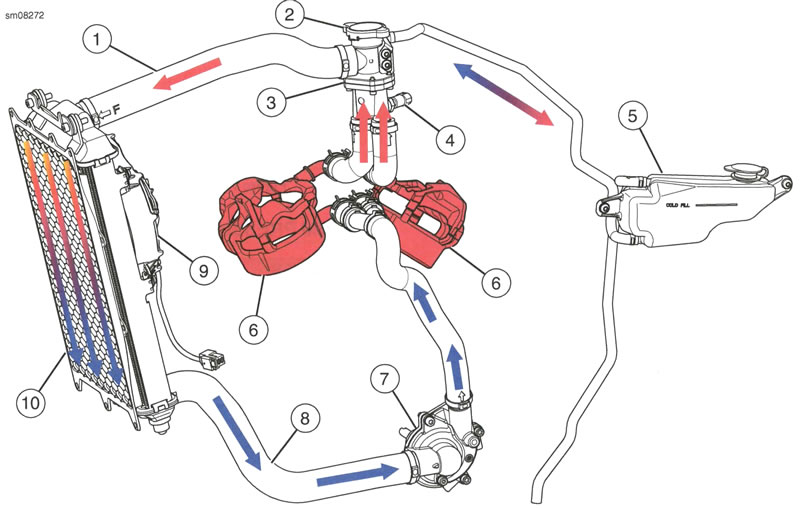Operation
Engine Below Operating Temperature
See Figure 7-1. When engine is below operating temperature the thermostat [in the thermostat housing (3)], is closed. Coolant in the engine coolant cavities (6) warms up as the engine operates.
Coolant Flow With Engine At Operating Temperature
1. Once the coolant temperature reaches a certain temperature, the thermostat opens and coolant begins to flow.
- a. Radiator (10) to coolant pump (7).
- b. Coolant pump (7) to engine coolant cavities (6).
- c. Engine coolant cavities (6) to thermostat housing (3).
- d. Thermostat housing (3) to radiator (10).
Coolant Overflow Tank
1. As temperature increases in the cooling system, so does pressure. To control pressure, the radiator cap (2) allows coolant to flow to the coolant overflow tank (5) as needed, a. Once coolant pressure reaches a preset value, a valve in the radiator cap opens allowing coolant to escape to the coolant overflow tank.
- b. Once coolant pressure decreases below the preset value, the valve in the radiator cap closes.
2. As temperature decreases in the cooling system, so does pressure. Once temperature decreases enough, a vacuum is created in the cooling system. To control vacuum, the radiator cap (2) allows coolant to flow back into the cooling system as needed.
- a. Once coolant vacuum reaches a preset value, a secondary valve in the radiator cap opens. Coolant is then drawn back into the cooling system.
- b. Once coolant vacuum decreases below the preset value, the valve in the radiator cap closes.

Figure 7-1. Coolant Flow: 1. Inlet hose; 2. Radiator cap; 3. Thermostat housing; 4. Engine coolant temperature (ECT) sensor; 5. Coolant overflow tank; 6. Engine coolant cavity (2); 7. Coolant pump; 8. Outlet hose; 9. Cooling fan; 10. Radiator
